When I first used the Metro in Washington D.C., I was a bit confused by the number of lines and how to buy a ticket
But once you get used to it, it’s a super convenient way to get around the city—even without a car!
In this article, I’ll explain how to ride the Metrorail in D.C., how to buy tickets, and what to know about each line and important tips—all from a local resident’s perspective

By the end of this article, even first-time visitors to D.C. will feel confident using the Metro to get around smoothly!
- Washington DC Metrorail Basics
- DC Metro Ticket Options | SmartTrip Card
- Fare System: How Much Does It Cost to Ride the Metro?
- How to Buy Metro Tickets in Washington, D.C.
- Tips to Keep in Mind When Riding the Metro
- Benefits of Using the Metro in Washington, D.C.
- Metro Stations Convenient for Touring Washington, D.C.
- Summary | Washington D.C. Metro is Convenient!
Washington DC Metrorail Basics
DC Metro Lines
Washington D.C.’s Metrorail system connects the city with parts of Virginia and Maryland through six different lines
The system is easy to use once you get the hang of it, and it’s a great way to avoid traffic when exploring the D.C. area
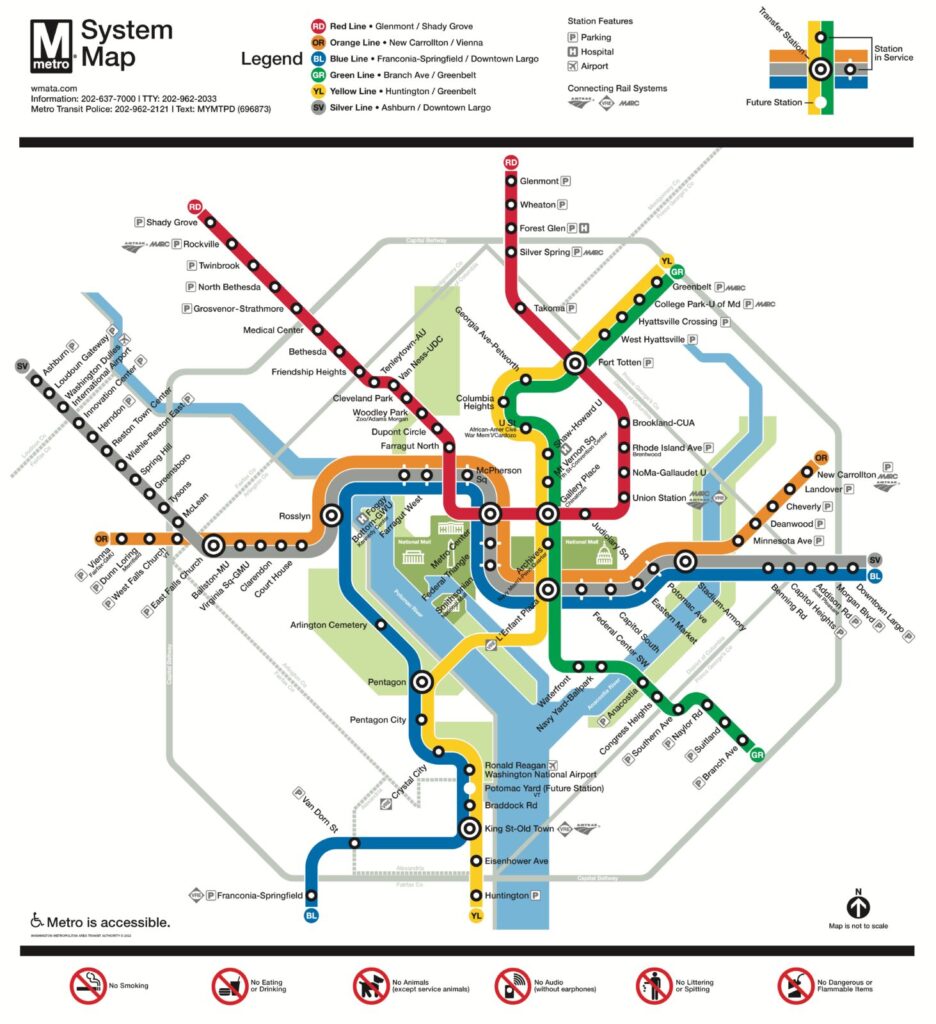
Is the D.C. Metro Safe?
When using public transportation abroad, one of the biggest concerns is safety. Even if it’s convenient, you might hesitate to use it if you’re worried about security.
In my experience, the D.C. Metro is relatively safe compared to many other big cities in the U.S.
The trains are generally clean, and you’ll often see families and commuters on board, so it feels quite similar to trains in Japan—making it a comfortable option for most travelers.

I’ve taken the Metro many times, even late at night, and I’ve never felt unsafe.
DC Metro Ticket Options | SmartTrip Card
In Washington, D.C., you won’t find paper train tickets. Instead, most people use a rechargeable IC card called a SmarTrip or a mobile app to pass through the gates.
What is a SmartTrip Card?
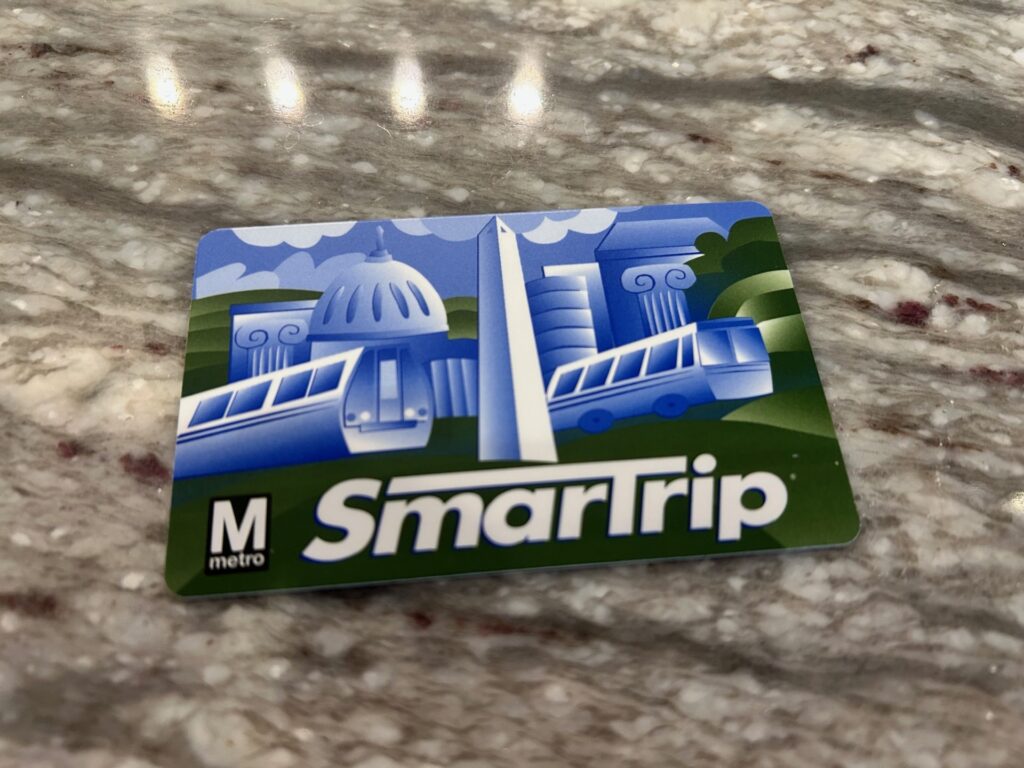
A SmarTrip card is a rechargeable transportation card that can be used on both the Metrorail and Metrobus systems in the Washington, D.C. area.
- You can use it for both trains and buses.
- It’s a prepaid card—just top it up and tap to ride.
How to Get a SmarTrip Card – 3 Easy Ways
Buy from a vending machine at the station
Each Metro station has touch-screen vending machines where you can purchase a SmarTrip card.
- Instructions are in English, but the process is simple.
- Payment can be made by cash or credit card.
Use the Mobile SmarTrip option
You can skip the physical card and use your smartphone instead!
- For iPhone users: add a SmarTrip card in the Apple Wallet app.
- For Android users: use Google Wallet.
This mobile version works the same as a physical card and is super convenient.
Buy at select airport kiosks or shops
Physical SmarTrip cards are also available at places like Reagan National Airport and some convenience stores around the city.

I think buying from the ticket machine at the station is the easiest to understand!
Fare System: How Much Does It Cost to Ride the Metro?
Washington D.C.’s Metrorail doesn’t have a flat fare. Instead, your fare depends on two main factors:
- Distance traveled
- Time of day
It might sound complicated at first, but once you get the hang of it, it’s simple!
Distance-Based Fare
The farther you travel, the more you pay.
You tap in when you enter the station and tap out when you exit.
The system calculates the exact fare automatically.
- Short trips: Around $2.00
- Medium trips: $3-$4
- Long trips (to suburbs): Up to $6.00
📌 Example:
- Dupont Circle → Smithsonian: around $2.00
- Vienna (suburb) → Metro Center: up to $5.40 during peak hours
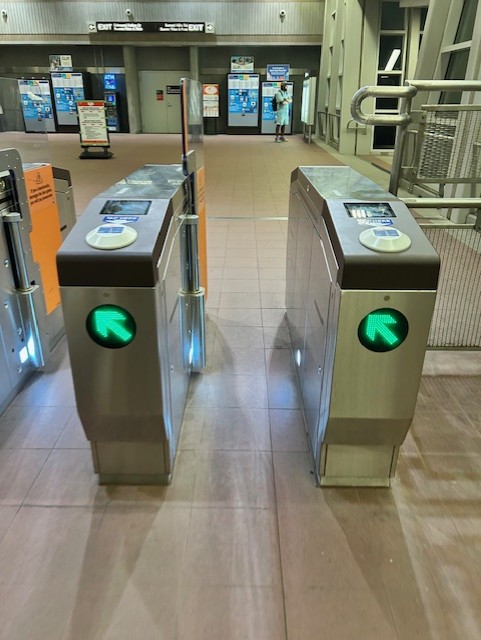
Time-Based Fare
Fares also change depending on what time you ride.
| Time | Fare Range | When |
|---|---|---|
| Peak hours | $2.25~$6.00 | Weekdays 7:00–9:30 AM & 3:00–7:00 PM |
| Off-peak hours | $2.00~$3.85 | All other times + weekends/holidays |

On weekends, fares are discounted — and on July 4th, America’s Independence Day, you can even ride for free!
How to Check Your Fare in Advance
You can:
- Use the fare chart at station ticket machines
- Check your trip cost on the WMATA official website
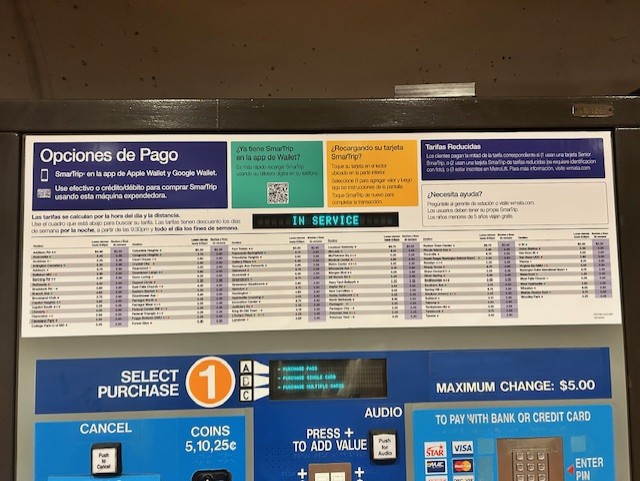
Day Passes & Unlimited Ride Options
If you’re planning to ride multiple times, these passes may save money:
| Pass Type | Price | Details |
|---|---|---|
| 1-Day Pass | $13 | Unlimited rides on Metro & bus for 1 day |
| 7-Day Unlimited | $58 | Great for commuters or long stays |
| 7-Day Short Trip | $38 | Unlimited rides up to $2 fare (ideal for short trips) |

Before I ride, I check the fare chart and load just enough balance onto my card to cover the trip.
How to Buy Metro Tickets in Washington, D.C.
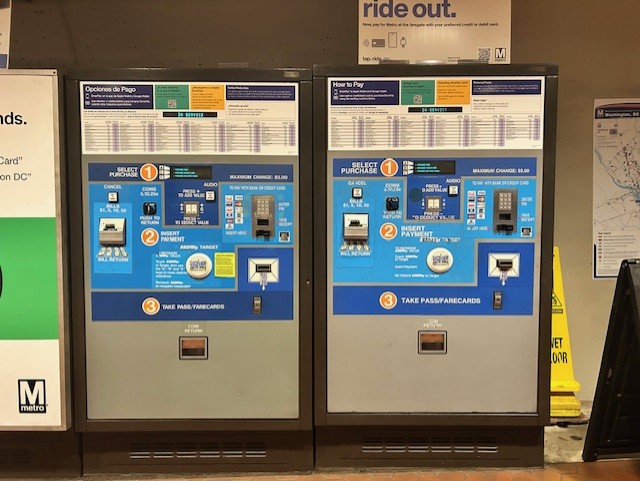
Buying a Metro ticket or getting a SmarTrip card for the first time might feel unfamiliar, but don’t worry — the process is simple, even for beginners.
Here’s a step-by-step guide to help you navigate the ticket machines at Metro stations.
Step 1: Choose the Type of Ticket
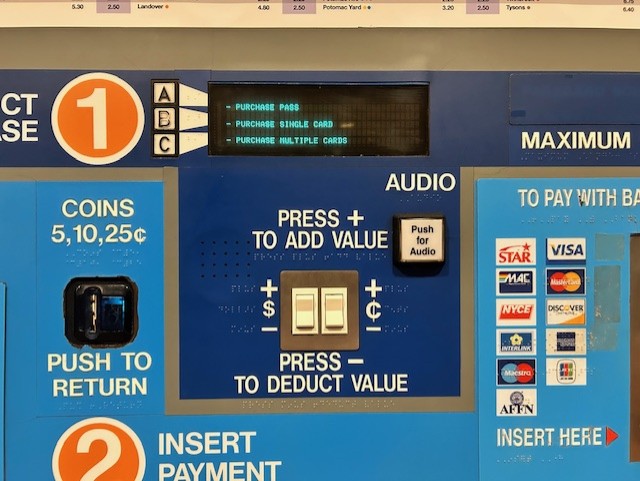
At the top of the ticket machine, you’ll see a touchscreen or button panel.
- To purchase a new SmarTrip card, press the “A” button.
Next, you’ll be asked to choose the initial amount to load onto the card.
- Use the $-marked arrow buttons to adjust the amount.
💡 Note:
- SmarTrip card costs $2
- Minimum balance required: $2
➡️ You’ll need at least $4 to get started.
Step 2: Make a Payment | Card or Cash
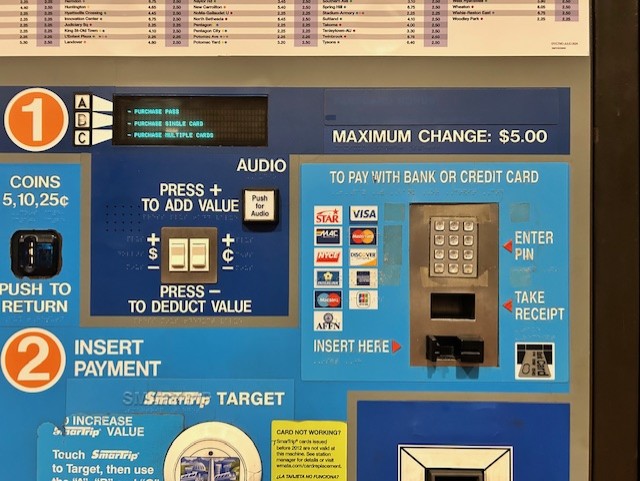
You can pay using:
- Credit or debit card (insert into the reader on the right side of the machine)
- Cash
Both options are available at most stations.
Step 3: Collect Your Card
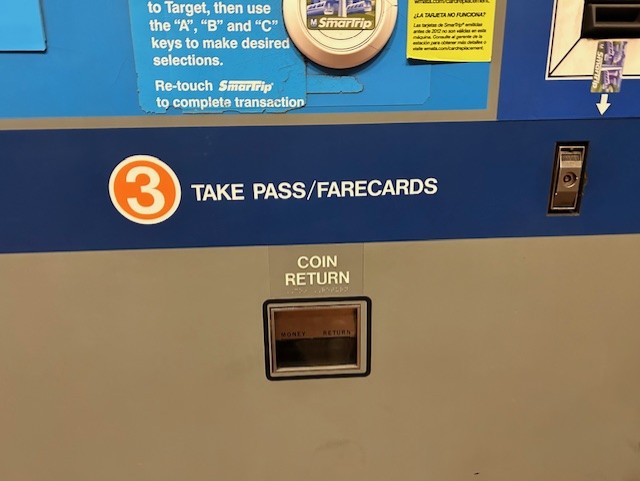
Once the payment is complete, your SmarTrip card (or paper farecard, if applicable) will come out from the slot on the right side of the machine.
How to Recharge (Add Value to) Your SmarTrip Card
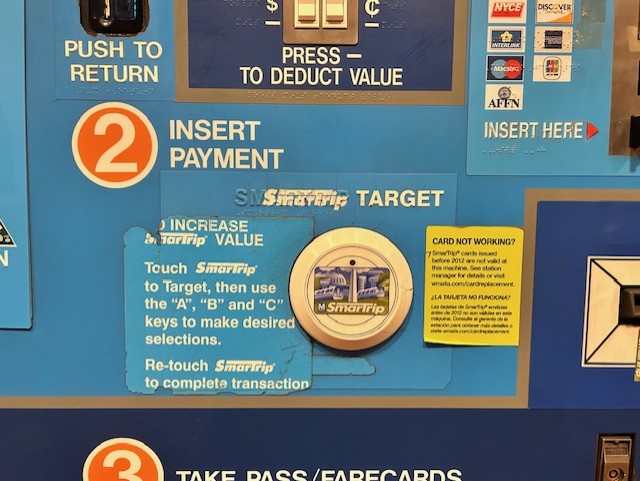
After your first ride, you’ll probably need to reload your card. Here’s how:
- Go to the same ticket machine.
- Tap your SmarTrip card on the card reader area — it’s usually located in the center of the machine.
- The screen will display the “Add Value” menu.
- Select your desired amount.
- Pay with cash or credit card.
And that’s it — your card is ready to use again!
Tips to Keep in Mind When Riding the Metro
Here are a couple of important things to be aware of when using the Metro in Washington, D.C. — some of these might surprise you if you’re used to trains in Japan or other countries!
No Eating or Drinking on the Train
Like many public transit systems in the U.S., eating and drinking are not allowed on Metro trains.
Even sipping water is technically against the rules, so be sure to finish your drinks before boarding.
You may notice signs inside the trains reminding riders of this policy, and in some cases, violators may be fined.
The Ride Can Be a Bit Bumpy
Compared to trains in Japan, D.C. Metro trains tend to shake more, especially when turning or braking.
If you’re prone to motion sickness, here are a few tips:
- Try to sit facing forward
- Choose a seat near the front or middle of the train
- Avoid looking at your phone during the ride

I get motion sickness easily, so after about an hour on the train, I start to feel a bit off…
Benefits of Using the Metro in Washington, D.C.
While there are some things to watch out for when riding the Metro, there are also plenty of advantages to using the train in D.C.
Driving into central DC can be challenging
There are many traffic restrictions and one-way streets in downtown DC, which often makes it time-consuming to reach your destination by car.
The roads are also relatively narrow—more like those in Japan—and with lots of traffic lights and pedestrians, driving in the city can be surprisingly stressful.
Parking in downtown DC is expensive
Parking fees tend to be high—for example, parking for 8 hours can cost around $25 at the cheapest.
On the other hand, taking the Metro for two people on weekends costs about $10 round trip, making it a much better value.
Additionally, parking troubles and incorrect charges are common in the U.S., so using the Metro is a safer choice in that regard as well.

The travel time by car and Metro is often similar, and considering the hassle of finding parking, parking fees, and driving stress, choosing to take the train is a very reasonable option.
Metro Stations Convenient for Touring Washington, D.C.
Smithsonian Station | Silver Line, Orange Line, Blue Line
Nearby Attractions
- National Museums
- Washington Monument
- Smithsonian Museums Complex
Smithsonian Station is located right in the heart of Washington, D.C.’s most famous tourist area.
The station sits roughly midway between the U.S. Capitol Building and the Washington Monument. Nearby, you’ll find many Smithsonian museums and art galleries, making this station a very convenient base for sightseeing.
As soon as you exit the station, you’ll see the National Mall stretching out before you — it’s a moment that really makes you feel like you’ve arrived in D.C.!
▶McPherson Square Station | Silver Line, Orange Line, Blue Line
Nearby Attractions
- The White House
When visiting the White House, McPherson Square Station is a convenient access point.
While it is possible to walk from the U.S. Capitol to the White House, the distance is quite long, so taking the metro is definitely worth considering.
If you want to explore tourist spots efficiently, using the metro to get around part of the way is a smart choice.
Washington Dulles International Airport Station | Silver Line
Dulles International Airport (IAD) is served by the Metro Silver Line.
Although it takes about an hour to reach downtown DC from the airport, the convenience of a direct, no-transfer ride is a big advantage.
In the U.S., the image is often that airports are only accessible by car or shuttle bus, but the ease of taking public transit straight to the city center is especially helpful for travelers.
Ronald Regan Washington National Airport Station | Blue Line, Yellow Line
Many travelers using domestic flights often use Reagan National Airport (DCA).
This airport also has a Metro station directly connected, allowing for easy and smooth access to downtown DC by train.
Compared to Dulles Airport, Reagan is much closer to the city, with a travel time of about 20 minutes.
This makes it very convenient for both sightseeing and business, especially for first-time visitors.
Summary | Washington D.C. Metro is Convenient!
In a country known for its car culture, Washington DC stands out with its well-developed Metro system.
The trains are clean and comfortable, making it a safe and convenient option—even for Japanese visitors—unlike the subway systems in cities like New York.
I hope this article helps those planning to visit Washington DC navigate the Metro with ease and enjoy their time in the city.
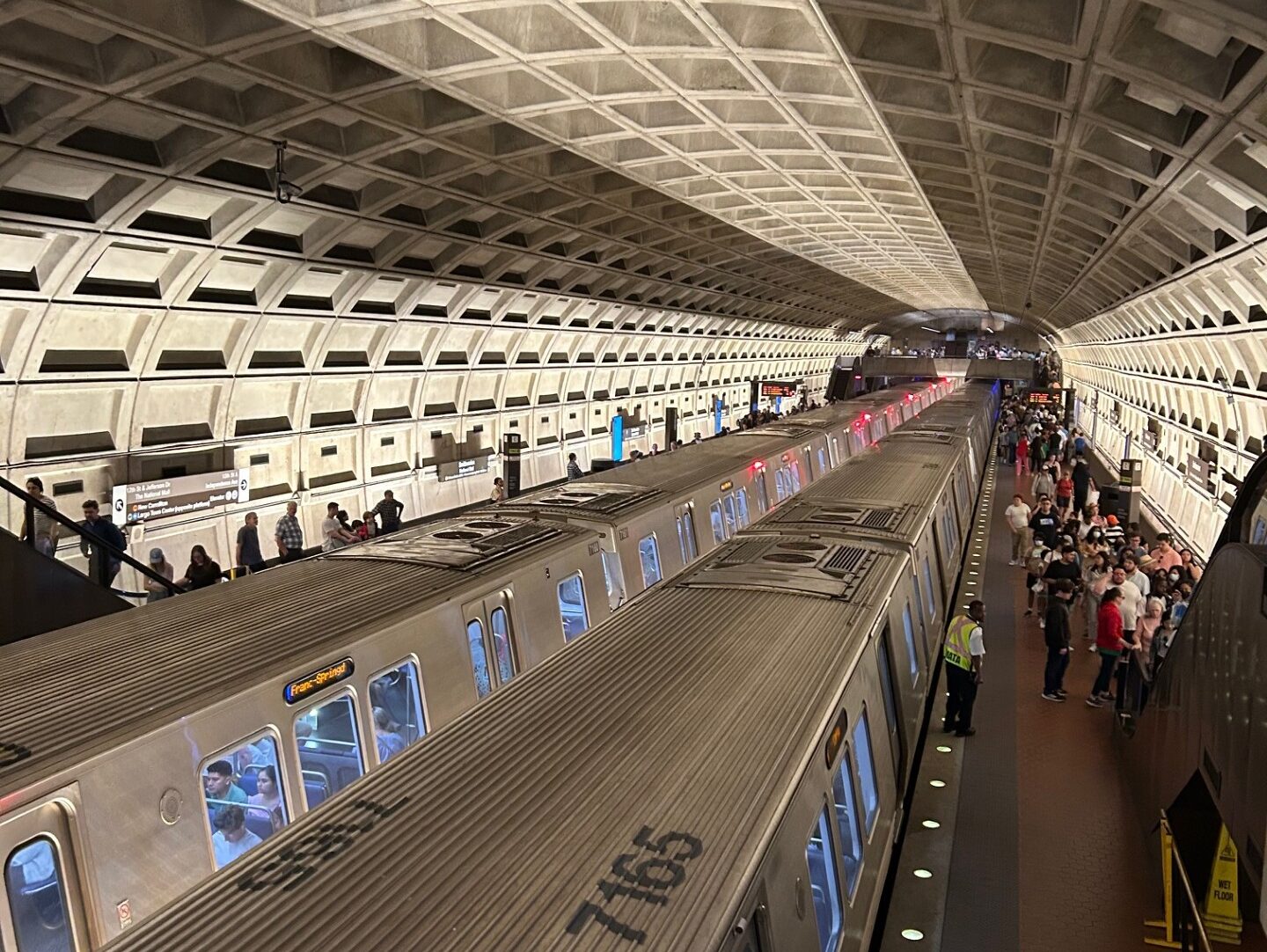


コメント